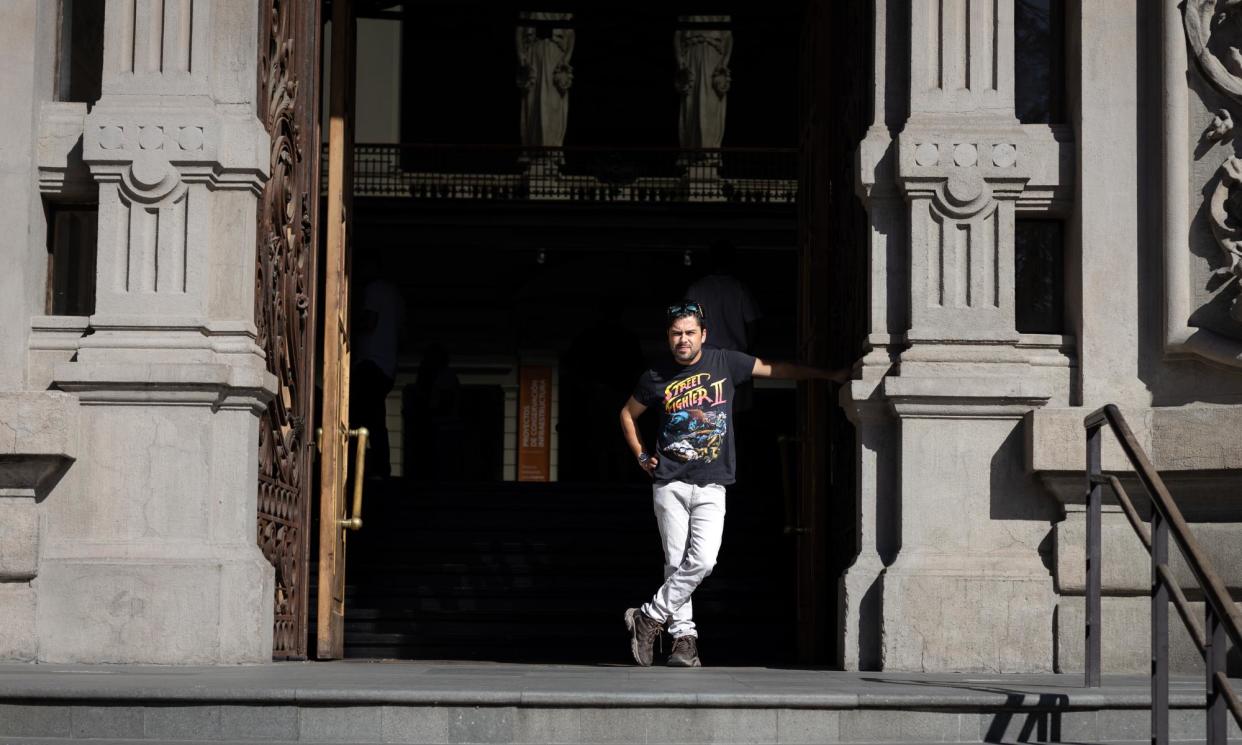Experience: I stole a Rodin sculpture from a museum

I was an art student in Santiago, Chile, when I was invited to the National Museum of Fine Arts for a private event in June 2005. I had some drinks and needed the bathroom, which was downstairs.
On the way, I went into a very dark room – I couldn’t even see the palms of my hands. Then, unknowingly, I walked into Rodin’s Torso of Adele, a small sculpture that is just 11cm high and 37.5cm wide. When I touched it, it was cold. It was the first time Rodin had been exhibited in Chile.
I didn’t even think – it was now or never. I held the work in my hands, and nothing happened. So I just took it, put it in my bag, and left feeling excited and emotional.
I had previously thought of taking an artwork from a museum to see how the public would react. Theft is all across this country – Chilean politicians have been plundering for years. So I thought: why not explore theft almost as if it were an artistic intervention, and see what happens next? My life at the time was quite punk. I was in a rock band and interested in radical artistic ideas.
I hadn’t thought specifically of taking the Rodin, it was just a general idea. That night, all the factors combined to make me do it. There was no alarm, no cameras.
I went home and poured myself a glass of wine. I began to sketch the sculpture on my easel. I saw Rodin’s signature on it. It was spectacular, and I felt so fortunate, an observer of a great story. After a few hours of and slept well.
The next day was cold, damp and cloudy. I turned on the television and saw the news. It was chaos. It was the biggest news story in Chile: a work had been taken from the National Museum of Fine Arts.
That’s when I began to fear the legal implications. I went to the police station to return the Torso of Adele and, at first, told them I had found the sculpture in the park. I never wanted to be in the middle of the action – I just wanted to see what would happen next. But I decided it wouldn’t make sense to lie, so I later told them I was a student, and that this was an artistic action. The officer said, “That’s brilliant.”
I spent the night in a holding cell. There, one policeman told me I had stained Chile’s reputation. But I never regretted anything. There were concerns the work was damaged, and they checked that it was fine. But I was not going to destroy an artwork – I treated it carefully.
Related: Experience: I discovered a mass grave under my house
When the police went to my house, I showed them a document on my computer where I had written down early plans to take an artwork, with the phrase: “Loss returns the memory of something that is not there.” In a world full of content, I wanted to explore the idea of, rather than bringing something into a museum, doing the opposite. After I took the sculpture, the exhibition was suspended and later reopened without the Torso of Adele, but many people still queued to see the empty plinth. I like to think people in Chile are closer to the piece because of what I did.
The legal fallout was long and uncomfortable. I had to speak to lawyers, prepare my case, and eventually go to court. Journalists would wait outside my house to take pictures of me. At the hearing, the judge agreed that my action was art. That was fantastic, though I had to spend 10 months volunteering for six hours a week in the library of Santiago’s main prison.
My action divided people at my university. Some supported it, others didn’t. They suspended my studies, so I went to a different university. There I met a fantastic artist who became a mentor to me.
Nearly 20 years on, at the age of 38, I am at a more mature stage of my artistic life. I am still creating art, under a pen name of sorts; I’ve made photography that explores the concept of death, and I’m creating a conceptual book with blank pages and hidden texts. I’ve been invited to exhibit some of my work in Argentina. I won’t say too much, but it’s an installation featuring whites on top of whites, tied to the concept of absence. I’ve always been fascinated by that, but I am not interested in taking anything else from a museum – for now.
• As told to Charis McGowan
Do you have an experience to share? Email experience@theguardian.com


